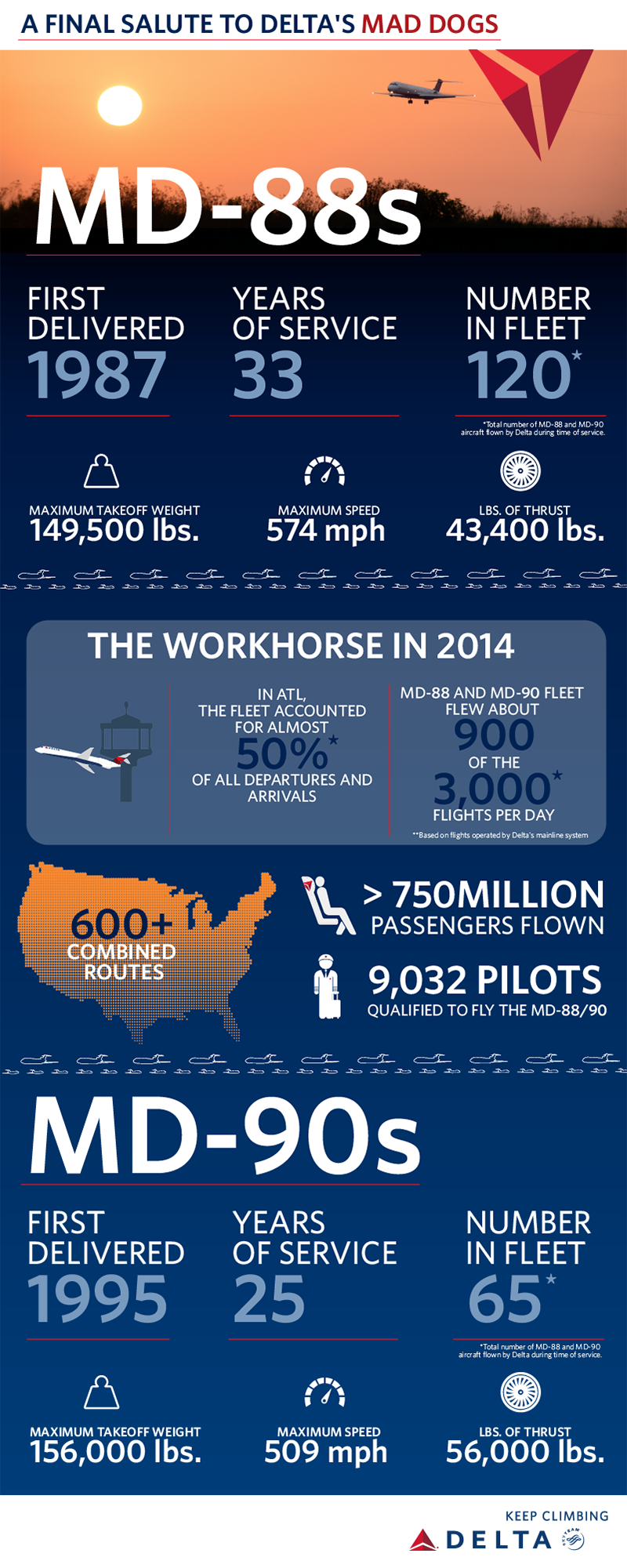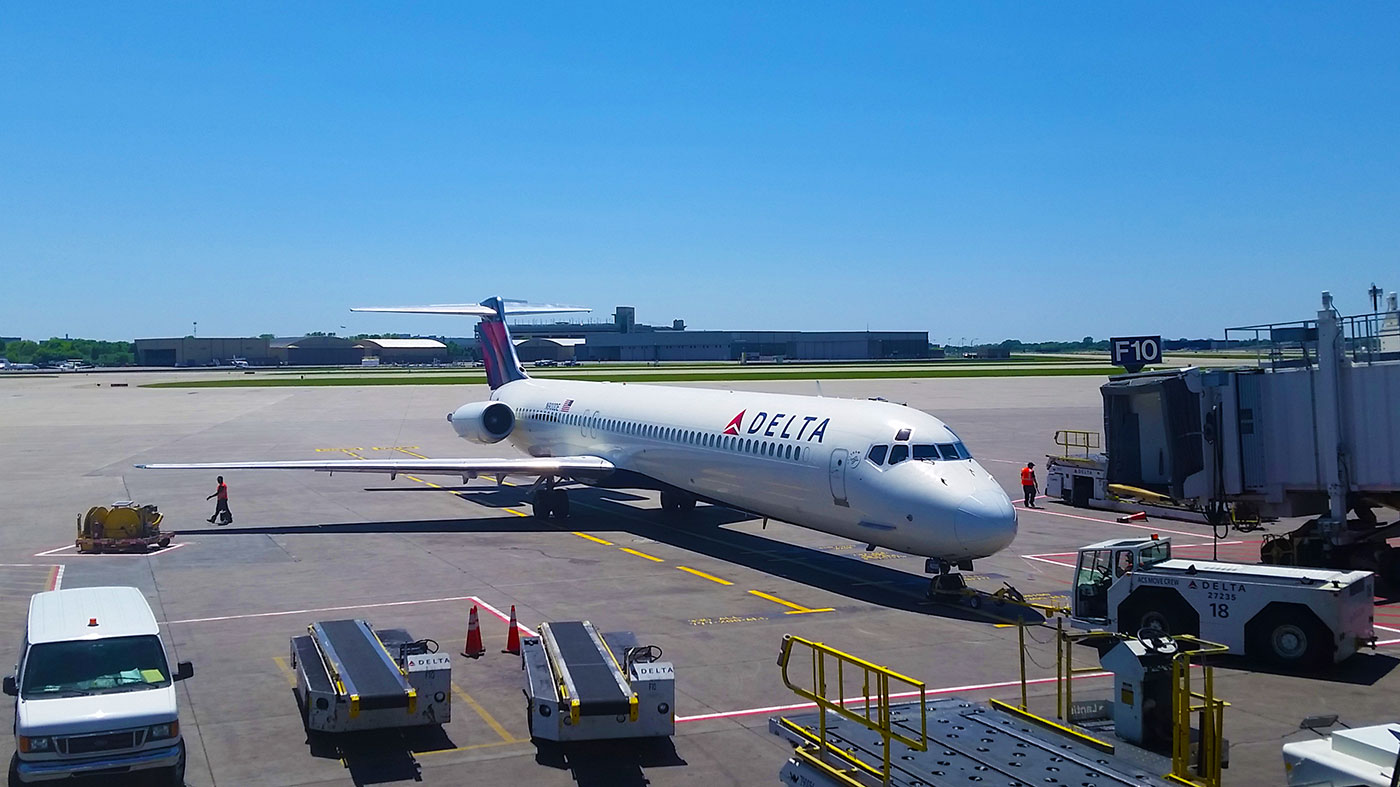Taking to the sky for their last scheduled flights today, Delta’s MD-88s and MD-90s will join the ranks of prior aircraft for retirement. Flying for more than three decades, in the case of the MD-88, these aircraft flew thousands of flights and assisted the carrier through some challenging times. The combined fleets carried more than 750 million customers during their operating lifespan.
Arriving Atlanta this morning, flights 88 and 90, conveniently flown by an MD-88 and MD-90 respectively, will arrive from Washington-Dulles and Houston between 9:00 and 10:00 a.m.
Following the retirement of American Airlines’ MD-80s last year, Delta became the last U.S. passenger airline to fly these aircraft. At the peak, Delta operated a fleet 185 “Mad Dog” jets that flew roughly 900 daily flights.

Fun Facts from Delta about the MD-88 and MD-90
About the MD-88

- Delta placed its initial order for 30 MD-88s, often called “Mad Dogs,” in January 1986 with options for 50 more. Eight of the planes were delivered as model MD-82, the forerunner to the MD-88, and later modified by Delta to the more advanced flight deck of the MD-88 configuration.
- The MD-88 first entered the Delta fleet in January 1988, serving Austin, Birmingham, Cincinnati, Jackson, Dallas/Ft. Worth, Houston, Oklahoma City, Little Rock, Shreveport, and Washington, D.C. The final MD-88 was delivered in December 1993.
- Developed from the original Douglas DC-9, the 149-seat MD-88 had twice the passenger capacity of the first version, and modernized engines and avionics. The aircraft’s updated “glass cockpit” boasted digital displays powered by cathode ray tubes was advanced at the time. It also featured aerodynamics improvements found on the earlier MD-82, including a redesigned tail cone.
- The aircraft also had a 22-inch wide aisle in the coach cabin and handrails along the edge of the overhead bins to offer additional comfort and safety for customers and crews moving through the cabin.
- As of February this year, prior to the coronavirus-driven fleet reduction, there were 47 MD-88s operating.
About the MD-90

- Delta was the launch customer for the 158-seat MD-90, which entered commercial service in April 1995 between Dallas and Reno. Some of the first cities scheduled for MD-90 service included Dallas/Fort Worth, Atlanta, Nashville, Newark, Reno, and Jackson.
- As the MD-88’s successor, the MD-90 improved Delta’s cost performance by saving fuel and carrying larger loads while minimizing environmental impact through less noise and reduced emissions. The aircraft offered Delta flexibility to provide passenger and cargo services in a wide variety of operating environments since the aircraft performed very well at hot and high-altitude airports, making it possible for Delta to schedule the aircraft for operations throughout North America—for short-haul and longer routes.
- Delta initially purchased the MD-90 to replace the Boeing 727’s, but when McDonnell Douglas was bought by Boeing in 1997, Delta canceled the rest of its MD-90s and began purchasing the Boeing 737-800. Post-bankruptcy, Delta expanded the MD-90 fleet between 2009 and 2013 when it purchased and refurbished 49 used MD-90s. The addition of these aircraft helped Delta rebound after bankruptcy.
- As of February, prior to the coronavirus-driven fleet reduction, there were 29 MD-90s operating.










